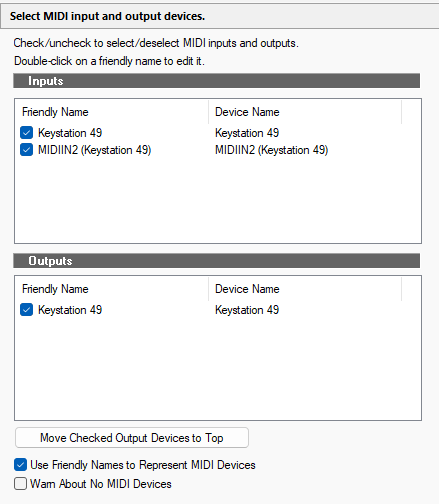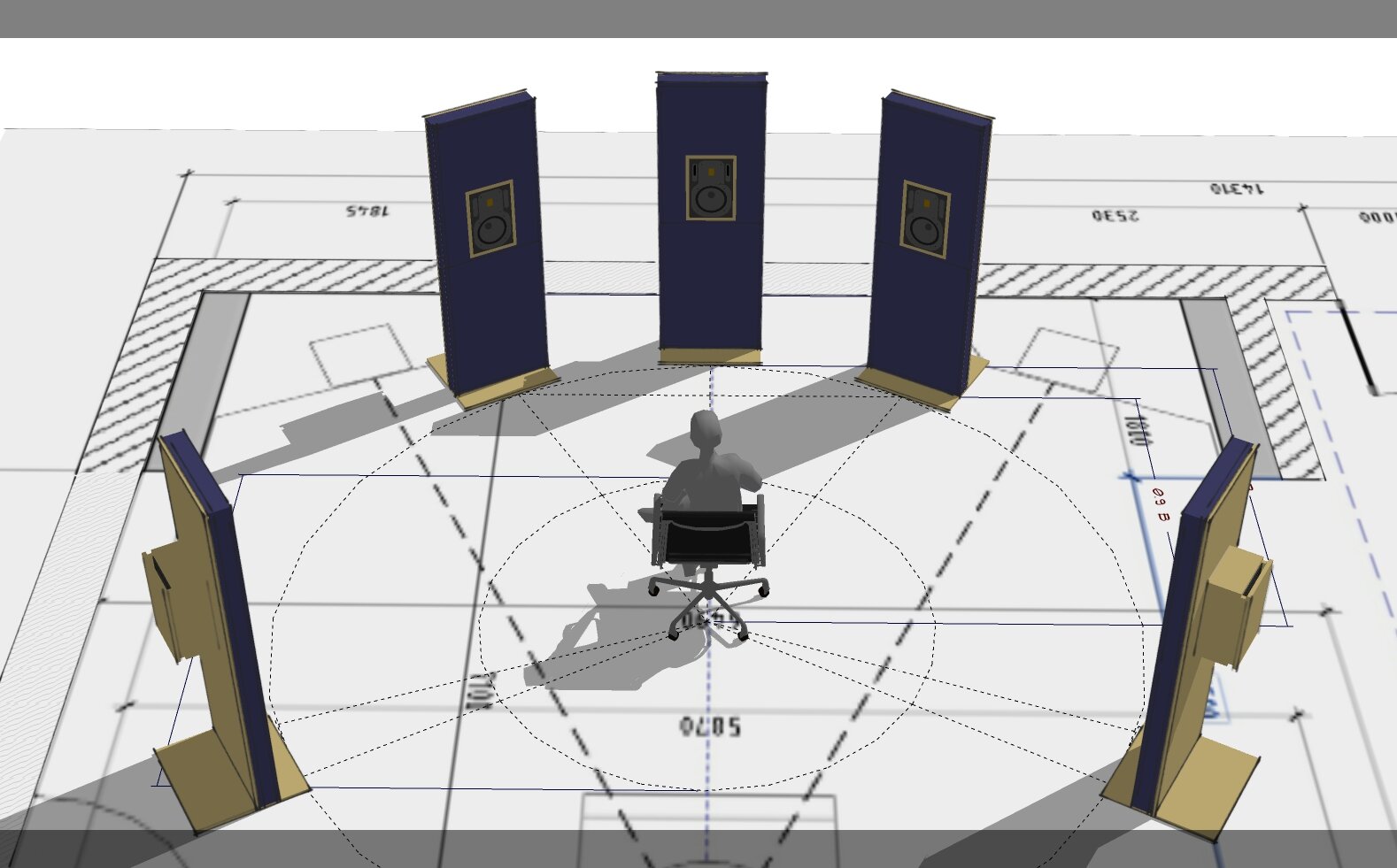-
Posts
1,716 -
Joined
-
Last visited
Posts posted by Glenn Stanton
-
-
yes it would see Kontakt as a single synth to freeze. one option is to have multiple Kontakt synths - my understanding is there is little penalty for this approach with Kontakt as it has some form of memory sharing for the application part, and @msmcleod did some analysis on that.
another option is disconnect the tracks you DO NOT want to freeze, then freeze the synth. then disconnect those tracks, mute those related MIDI tracks (or clips), and unfreeze the synth. then reconnect the other tracks you want to hear the MIDI audio from. a bunch of steps but not too long with a limited number of tracks.
-
 2
2
-
-
18 hours ago, Lynn Wilson said:
Very lovely song, Glenn! I like this style of music, and your voice fits it very well. I like the sax part, but not sure about that particular sample (if it was a sample). Kudos on the backup vocals and lyrics, too!
thanks Lynn. the sax is indeed sampled (Real Tracks from BIAB soloist) and at first i was thinking i'd replace it (actually a number of times thinking i'd replace it) but then i realized - it's somewhat "angry" and in a way, the person experiencing the loss is somewhat angry at the unfairness of the universe. so i decided (for the moment) to keep it. i'll probably remove the delay effect as i tend to overuse it in my songs. cheers!
-
one of the nice features of AD - is it's built in mapping tool. depending on where i'm importing the MIDI from, i can usually find one to plug in directly using just a default AD drum map (and without one as well -- i use the drum map simply to have the names, not that i'm mapping anything specific).

-
 2
2
-
 1
1
-
-
i get a new OS when i get a new device 🙂 although proper backups are important, if my OS craps outs, since i've got the installation files and the content backed up, i can format my OS drive and reinstall the OS fresh, remove all the crud they bundle, then reinstall. takes me about 2 days to fully recover (mainly loading takes times) but then my system is as clean as it's ever going to be. my configurations, contents, licenses etc are all saved separately and fully re-installable. i may have to go to some sites to deactivate things so my licenses are still reusable from a count perspective, but i do that before the update.
-
how far will you go when everything that matters is gone?
comments welcome.
-
 5
5
-
-
in W11 the default is "C:\ProgramData" which is different than W10 which has "C:\Program Data" - either someone in MS oops or they found having a space in the directory name was always a bad choice and caused more issues than not...
-
Prochannel
in Q&A
the audio part of the secret are the anti-aliasing filters used. for the digital side: power, clocks, etc all contribute to how good (or not) a AD/DA unit "sounds". poor clock stability, under-powered, cheap opamps and filtering components all make a difference. and much of it is measurable. check out a DIY equipment forum where some folks get really in depth on the components, actual o-scope views, log traces, etc etc.
-
 1
1
-
-
sure - share screenshots of your laptop and desktop display settings. also any video display information would help as well.
-
a number of years back, a person had done a whole exposé on The Beatles - key changes and tempo changes per song. there is this one but not the tempo map... https://www.beatlesbible.com/forum/recording-and-musicology/keys-that-the-beatles-used-now-that-youve-found-another-key/
-
Prochannel
in Q&A
one of my favorites as a kid (14?) was to take an old single tube photo preamp (from my old non-turning portable record player) and just plug the guitar straight in and then output to the amp (whatever one tube or solid state never really mattered at the time) - using the volume control to get just ther right distortion - from just light distort to that "modern" metal screaming distortion! the key was to add a volume pot in front of the input to limit the guitar level and a 10K resistor in series for the input load.
-
 1
1
-
-
no idea. so i just make it a hard selection and ignore it. presumably it's because of whatever matching criteria is used is different - names, CRC, uuid, etc etc which don't align because the vendor gets creative and wants to make a splash with their VST3 version...
-
i just go into my plugins manager and exclude VST2 for which i have a VST3. takes a few minutes. then if i need the VST2 version for some reason (seldom) then it's right there, re-enable it and ready to go. no messing with installations, paths, and updates fro mthe vendor work as expected and very few times does it ever affect the excluded setting.
-
 1
1
-
-
45 minutes ago, John Vere said:
I wonder if you could combine a Emoji font with a sound font?
Think of the possibilities!sure 192Khz 32-bit poop emoji 🙉
-
you may have an event triggering the volume change or an envelope controlling it. i had a similar issue with sforzando and kontakt in my recording template until i foudn i had saved an event during testing which triggered the volume drop.
-
20 minutes ago, sjoens said:
Not here but only since I reinstalled Windows 10. Not sure why it would be a font issue, aren't they part of forum software? I see the ones missing look smaller than the rest.
that's because the people who were creating the larger ones we see today were also killed in a tragic accident... coincidence? you have to wonder...
-
i've always used an SM58 and sometimes an SM57 w/ pop filter.
then about 12 years ago? i bought a Behringer B-2 Pro. $200. i've used this with many really good vocalists both recording and live and it is just awesome. esp given the price. now i have heard a few people with lemons but most folks who try it a surprised by how good it is for vocals. multiple patterns (mono, figure-8, and cardiod), 10db pad (never used it myself).
my other favorite is the Audio-Technia 3035 - but it's more "neutral" than the dynamics or the B-2 so it's good for cases where you need really flat (at least it seems flatter). right now i have a Slate VMS ML-1 sitting next to me and it's ok -- but i really like the filters to mimic other mics so i use those more than recording with the mic itself.
-
 1
1
-
-
-
lecture speed
in Q&A
depends on your meaning - if you set the tempo of the project lower it will play back with longer timing between sounds or extend continuous sounds. if yo uwant the audio itself to play slower regardless of tempo. there are some plugins that can mimic slower audio, and there is stretching clips and lower tempo as well.
e.g. https://www.pluginboutique.com/product/3-Studio-Tools/72-Utility/5026-SlowMo
you could also play the audio in your media player - most have 1/4, 1/3, 1/2 1.5x, 2x etc speed controls if you're jsut listening to it.
-
i think there are some plugins which can split based on frequency - some on ranges (like the Waves Studio Rack) and others more like an EQ (multiband, dynamic, static). e.g.
https://www.waves.com/plugins/studiorack
https://www.eventideaudio.com/plug-ins/spliteq/
https://www.kvraudio.com/product/thesplit-by-thezhe
https://bedroomproducersblog.com/2021/11/03/sound-fingers-dub-spl4/
https://integraudio.com/7-best-frequency-splitter-plugin/
-
 1
1
-
-
a fairly nice low cost one i got recently is the Session Horns from NI, but for free the Bolland Brass Section soundfonts in Sforzando work nicely.
https://www.musical-artifacts.com/artifacts?formats=sf2&tags=bolland
https://musical-artifacts.com/artifacts?formats=sf2&tags=brass+section
-
Quote
Cakewalk doesn't recognize in ASIO mode unless I restore the unit to its factory settings
so, using for 5.1 scenario - requires 6 channels of 8 alt channels & leaving the 2 mains for stereo (if desired). not sure why you could configure it for "5.1" mode when it's a multiple output device 🙂 when i use my UMC1820 - well in my case - i have optical out to my 5.1 JVC receiver to run the "5.1" setup and multiple outs for 2.1, 2.0, and so on. but could easly run 6 channels for 5.1 if i was doing mixes on a larger system.
it seems like factory settings and simply patching the outputs to the appropriate speakers/amps etc would get your working.
-
usually you get 2 MIDI devices - the "instrument" MIDI and the "controller" MIDI. for me most times the MIDIIN2 and MIDIOUT2 (not shown in thie example) is my "controller" MIDI which uses certain keys and button as a means to control something in the DAW. my "instrument" MIDI is the main one which is where my note keys, pedal etc are all processed in the DAW for the VI and generally recording the MIDI performance.

-
maybe some divide and conquer steps - in my experience those cable MIDI devices have a lot of variation in their ability to do even simple things all the time...
0. what version of cakewalk are you using?
1. remove the MIDI cable device from the MIDI out list. hit apply. (this means you're using the keyboard as a MIDI controller input only. this should also drop the mapping you have set up.
2. uncheck zero controllers. hit apply. while it's likely we'll turn this on, let's check this option.
test.
-
Win 11 Home 23H2
BC Patch Version: 2.67





mixing vocals issues
in Cakewalk by BandLab
Posted
long story but short version - Bob Katz (whose mastering audio book is still great reading) was one of the early advocates of standardizing volume levels and he developed a system which provided for setting the output level vs a dynamic range choice. this model was later refined and adopted by many in the broadcast standards we see today.
this is a nice reference: https://www.meterplugs.com/blog/2016/10/14/k-system-metering-101.html